
SearchGPT and Perplexity AI are reshaping how search engines work—offering AI-driven results that challenge traditional SEO strategies. Truth be told, unless they release a complete explanation of how their engine works, we’re all just guessing.
But that doesn’t mean we can’t draw conclusions from our experimentations with these tools. And we should be doing that, especially taking into account that SearchGPT or Perpexity AI will most likely steal some of Google’s market share in search in the not so far future.
After months of experimenting with these platforms, analyzing trends, and gathering insights from other marketers and users, we have compiled a list of actions you should be taking to rank on SearchGPT and Perplexity AI.
Follow these actions and future-proof your SEO strategy for the AI-driven search era.
That being said, let’s get started.
Table of Contents
How do AI-based Search Engines work?
The world of search engines in 2024 has been nothing short of chaotic—in the best way possible.
Google, the long-time ruler, is doubling down on its dominance with its AI-driven Search Generative Experience (SGE), blending conversational AI with traditional search to offer users smarter, more contextual results.
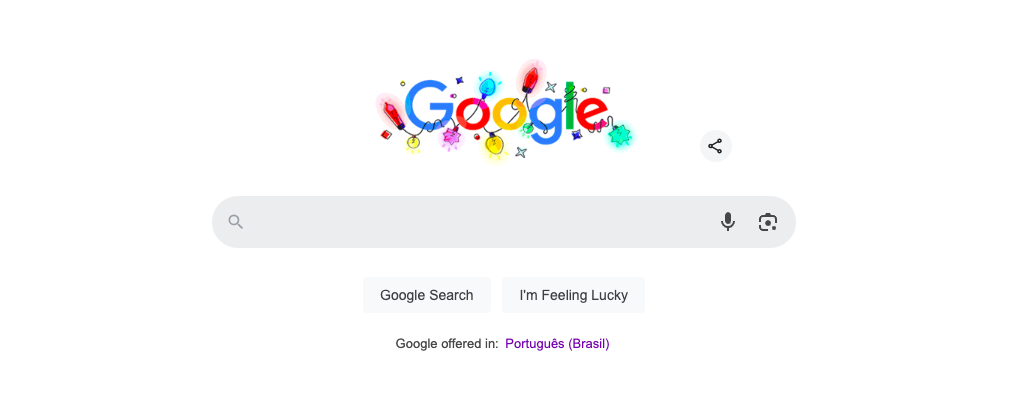
Meanwhile, Bing has repositioned itself as a real competitor by enhancing its search with AI-powered features that provide richer, more interactive results, giving it a much-needed edge to attract users looking for a more dynamic search experience.
But the real shake-up comes from standalone players like OpenAI’s ChatGPT Search and Perplexity AI. Throw in Anthropic’s Claude AI, and suddenly the search engine market feels like the Wild West for SEOs.
For marketers and SEO experts, this wave of AI search could mean a fundamental shift on search behavior. More people are leaning on AI-driven search engines for quick, conversational answers rather than traditional link-based searches. This means SEO strategies now need to cater to multiple platforms, each with its own quirks, priorities, and evolving algorithms.
What do SearchGPT and Perplexity AI Have in Common?
SearchGPT and Perplexity AI are shaking up the search world by taking a more conversational, user-focused approach. While they each have their quirks, there’s a lot they share that sets them apart from traditional search engines like Google.
1. They prioritize dialogues over links
Forget the endless scroll of blue links—SearchGPT and Perplexity AI are all about giving you answers straight up. Both platforms work more like chatbots, offering responses that feel tailored and human. Instead of forcing users to piece together information from multiple websites, they summarize and synthesize, saving everyone time (and patience).
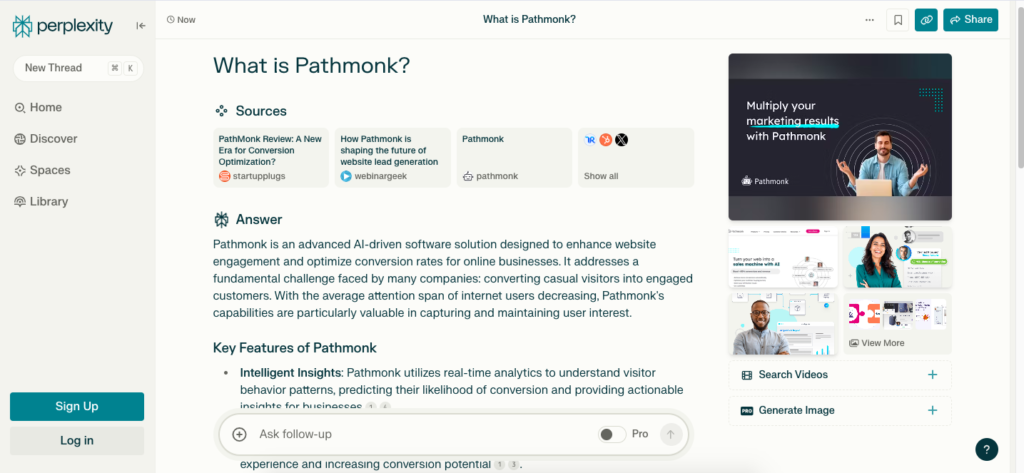
And here’s the best part: they let you ask follow-up questions without starting over. This makes the search process feel less robotic and more like a helpful back-and-forth with a knowledgeable assistant. No wonder people are getting hooked.
2. Context matters more than keywords
Here’s where things get interesting: both platforms are masters of context. They don’t just scan for keywords; they analyze the intent behind the query. Whether it’s a straightforward question or a more nuanced search, they aim to understand what users actually mean.
How to Rank on SearchGPT and Perplexity
1. Build domain authority
When it comes to AI-powered search engines like SearchGPT and Perplexity AI, domain authority carries significant weight when compared to page authority. These platforms prioritize the trust and credibility of the domain as a whole rather than evaluating individual pages in isolation.
This shift means that optimizing a single page for SEO isn’t enough if the domain itself doesn’t meet the credibility standards these tools rely on.
AI-driven search engines source information from domains they deem reliable, using patterns across the entire website – and even other websites – to determine trustworthiness. Instead of focusing on how optimized a single page is, they look at the site’s overall reputation.
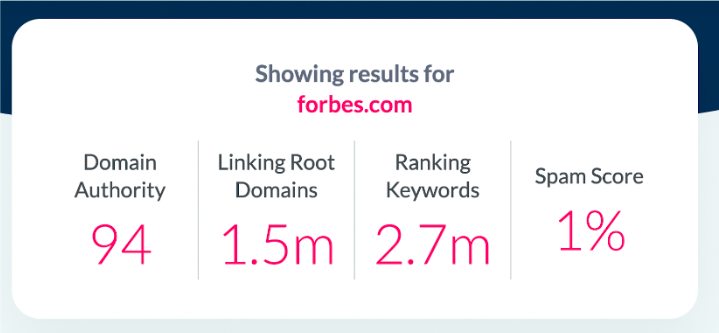
This makes domain authority a critical factor. If your site has a history of publishing reliable, well-researched content, it’s more likely to appear in AI-generated responses. Pages on low-authority domains, no matter how optimized, are unlikely to gain traction with these platforms.
Page authority, while still relevant, functions as a secondary factor. A high-authority page may contribute to visibility, but only if the domain it resides on is already established as credible. In practice, this means that while strong page-level SEO can enhance user experience and relevance, it won’t make much impact unless it’s supported by a reliable domain.
2. Write in a conversational tone
This is specially true to SearchGPT, which instead of presenting users with a list of links to sift through, it delivers direct, dialogue-like responses. For marketers, this shift requires a new way of thinking about content optimization.
Traditional search engines like Google rely on links to guide users, requiring multiple clicks and significant time spent scanning content to find the right answer. In contrast, SearchGPT and Perplexity AI eliminate the extra steps by distilling relevant information into a conversational response.
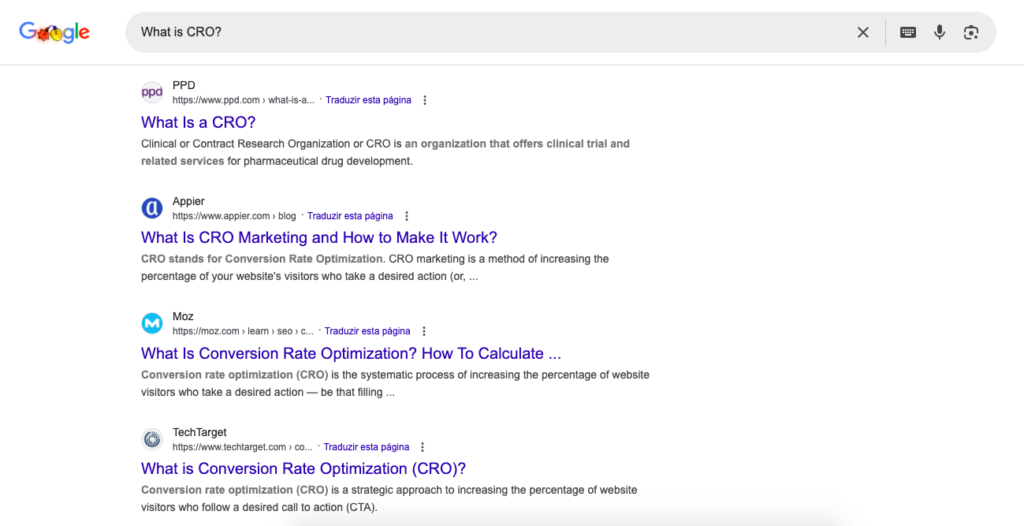
For SEOs, this means content must not only be informative but also structured in a way that lends itself to being summarized. These platforms aren’t designed to direct traffic—they’re built to provide the most concise, accurate answer possible, often pulling from multiple sources to create a cohesive response.
Here are some actions you can take to make your content more conversational-like:
- Answer comprehensively but concisely: AI platforms favor content that gets straight to the point while still covering the key details. Break complex ideas into manageable chunks that are easy to process.
- Anticipate user intent: These engines thrive on understanding context. Structure your content to address not only the primary query but also potential follow-ups, mimicking the natural flow of a conversation.
- Use clear, approachable language: Overly technical or jargon-heavy content can create barriers. Instead, focus on clarity and accessibility while maintaining authority.
For a good optimization for both SearchGPT and Perplexity AI, make sure your content offers a conversational format, but also well structured data and information (see “Applying structured data”).
3. Focus on getting more citations and mentions
Instead of relying on backlinks, AI-driven platforms prioritize citations and mentions as indicators of credibility and reliability. This change requires marketers to rethink their authority building.
SearchGPT and Perplexity AI are designed to extract and synthesize information from multiple sources. For these platforms, citations are a measure of trust. Although they might present information differently, both look at how often a domain or piece of content is referenced in reputable contexts, focusing on the source’s authority rather than the number of backlinks pointing to it.
Mentions, even without a hyperlink, can carry significant weight. If your brand or content is consistently referenced in respected publications, academic papers, or industry discussions, it signals to these tools that your domain is a credible source of information. This is a departure from the backlink-heavy strategy of traditional SEO, where volume often overshadowed context.
4. Apply structured data
SearchGPT and Perplexity AI rely on clear, machine-readable information to extract, interpret, and synthesize relevant answers. Structured data is how we can ensure our content is visible and usable in AI-driven search.
Unlike traditional algorithms that analyze entire pages for relevance, AI systems often cherry-pick specific pieces of information to construct their responses. Properly implemented structured data acts as a roadmap, helping these engines locate and interpret your content accurately.
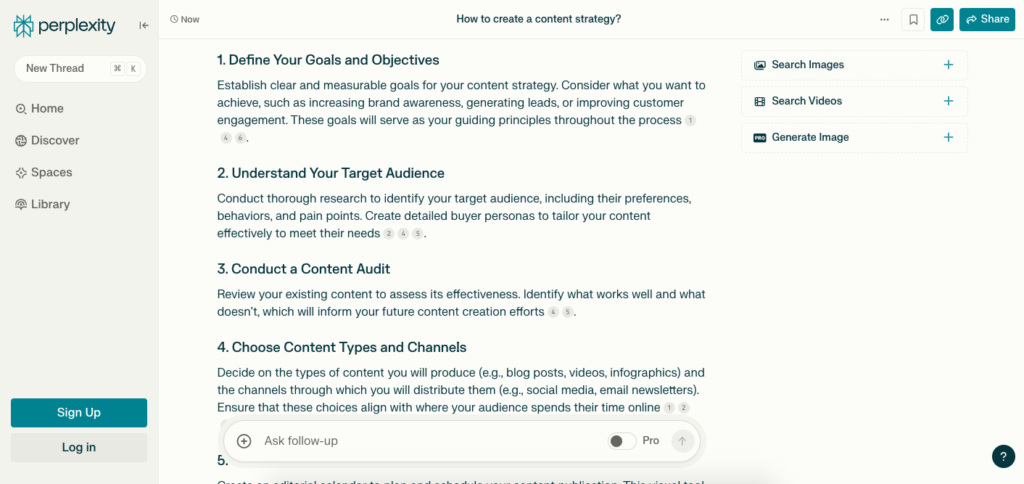
For instance, schema types like FAQ or HowTo not only make content more accessible to AI but also increase its chances of being featured in synthesized responses. In essence, structured data enables AI tools to “read” your content the way it was intended, ensuring nothing important gets lost in the process.
Here’s are some tips on how you can get structure data right:
- Use specific schemas: Focus on schemas that align with your content type. For example, use FAQ schema for question-answer pages or Product schema for e-commerce listings.
- Mark up all critical content: Don’t stop at blog posts. Apply structured data to product descriptions, tutorials, event details, and other valuable resources.
- Validate and update regularly: Use tools like Google’s Rich Results Test to validate your schema and ensure it’s free of errors.
5. Create comprehensive content coverage
SearchGPT and Perplexity AI assess how well a site covers an entire topic. This is where content clustering and pillar pages come in, offering a structured way to establish topical authority and make your content more accessible to AI-driven search engines.
A pillar page is your main hub of information on a broad topic, offering an overview that links to more detailed, related articles—your cluster content. Together, they create an interconnected web of knowledge that signals expertise.
For example, if your site focuses on SEO, your pillar page might cover “The Ultimate Guide to SEO.” Cluster content could then explore subtopics like “Keyword Research,” “Link-Building Strategies,” or “Technical SEO,” each linking back to the main guide. This organization helps both users and search engines navigate your content more effectively.
Using these easy steps you can start building up your content clustering:
- Start with key topics: Identify the broad areas where you want to establish authority.
- Develop detailed pillar pages: These pages should offer a thorough overview of the topic, providing value on their own while linking to supporting content.
- Create cluster content: Write in-depth articles on subtopics that naturally connect to your pillar page. Ensure each piece links back to the pillar for a cohesive structure.
- Prioritize internal linking: Interlinking cluster articles strengthens the connections between content, making it easier for both AI platforms and users to navigate.
6. Guest posting or collaborations
When it comes to building domain authority, it’s not just about what’s on your website—it’s also about who’s talking about it. As we discussed on “Citations and Mentions Over Backlinks”, AI-driven platforms like SearchGPT and Perplexity AI favor sources that are widely referenced in trusted spaces. This is where guest posting and collaborations shine.
By contributing to reputable websites in your niche, you’re positioning your brand as a thought leader. High-quality guest posts that offer unique insights or solutions increase the likelihood of your content being cited or mentioned in authoritative contexts. Collaborations, whether through co-written reports, podcast appearances, or webinars with established industry figures, further amplify your reach.
Partnering with trusted sources helps signal that your domain is a reliable player in your industry. In other words, the more credible associations you create, the stronger your domain authority becomes.
7. Make people talk about you (user-generated content)
In the world of AI-powered search, where platforms like Reddit and Quora are often mined for information, user-generated content (UGC) is a powerful way to boost visibility. These tools thrive on finding contextually relevant and comprehensive answers. If users are already discussing your brand or content in these spaces, you’re essentially feeding the system what it’s looking for.
UGC involves creating content and experiences that naturally inspire conversations. Publish content that sparks debates, ask thought-provoking questions on Reddit, or craft resources so useful that Quora users feel compelled to share them. The ripple effect of organic mentions signals to AI platforms that your domain is relevant and engaged with its audience.
Unlike traditional SEO where backlinks take center stage, UGC demonstrates real-world engagement. The more your brand is authentically discussed, the stronger your presence becomes on AI-driven search tools.
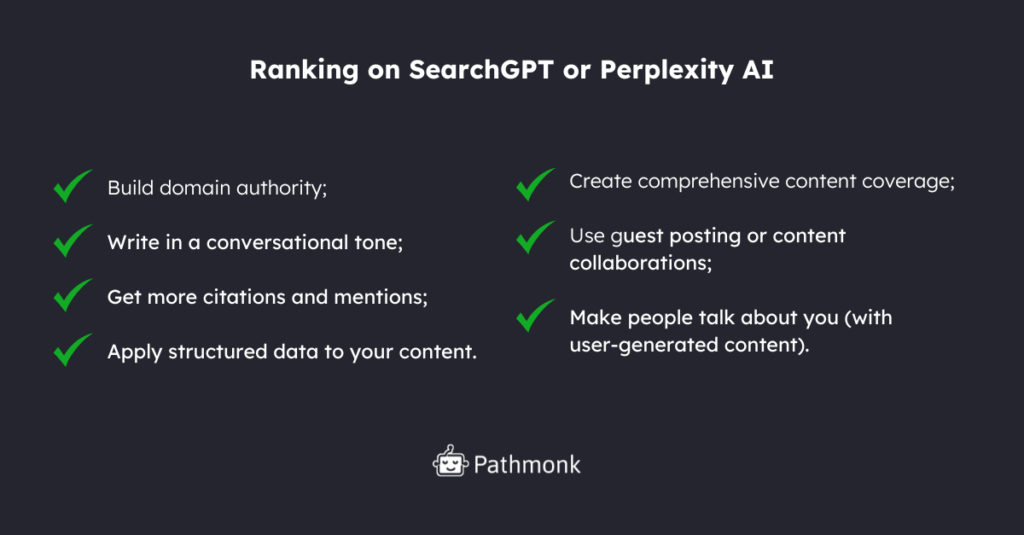
Future-proof Your Organic Results with Pathmonk
With organic traffic becoming more complex and competitive, it’s more important than ever to ensure that visitors who do land on your site have an excellent user experience and are effectively guided towards conversion.
With less traffic, each visitor becomes more valuable, and your website must be optimized to make the most of every interaction.
Pathmonk takes your website experience to the next level, offering personalized experiences designed to what the user is searching for. By showing what each visitor needs with the perfect timing, you can expect an average growth of 50% on your conversion rates.
Here’s how Pathmonk can help you make the most of your organic traffic:
- Drive personalized user experiences: Pathmonk identifies what users are searching for and dynamically adjusts your website experience to meet their needs. This leads to more relevant interactions and a smoother journey toward conversion.
- Maximize conversions: By analyzing user behavior in real-time, Pathmonk ensures that every visitor is guided with the perfect call-to-action at the perfect time.
- Increase lead quality: Pathmonk guides top-of-the-funnel readers through a personalized journey, nurturing their interest and aligning their intent with conversion goals.
Increase +180%
leads
demos
sales
bookings
from your website with AI
Get more conversions from your existing website traffic delivering personalized experiences.

Ready to see how Pathmonk can make the most of your organic traffic?
- Explore our interactive demo for a firsthand experience of AI-driven personalization; or
Book a product tour with our team to have a closer look into what Pathmonk can do for you.
FAQs About SearchGPT and Perplexity AI Ranking
What are the main differences between SearchGPT and Perplexity AI?
These differences might represent slight changes on your content strategy:
SearchGPT leans heavily on its conversational abilities. It’s designed to generate fluid, context-rich responses that mimic a natural conversation. This makes it especially effective for handling complex queries that require layered or nuanced answers.
However, it often relies on summarizing large amounts of information, which means its outputs can occasionally lack precision or miss critical details if the input content isn’t comprehensive.
Perplexity AI, on the other hand, places a greater emphasis on accuracy and sourcing. It prioritizes transparency by providing clear citations for the information it presents. This makes it a favorite for users who want to verify data or explore the original sources. Its interface is slightly more utilitarian, catering to users who value clarity over conversational flow.
In short: if you’re optimizing for SearchGPT, focus on crafting content that’s detailed and contextually rich to feed its conversational model. For Perplexity AI, ensure your content is precise, well-structured, and authoritative, as citations play a bigger role in how it chooses its sources.
Does ranking on Bing make you rank on SearchGPT?
That’s a common misconception. But the answer is: not necessarily. While Bing and SearchGPT share some underlying technologies (both utilize OpenAI’s GPT models in different ways), their ranking criteria and how they surface information differ significantly.
Bing functions as a traditional search engine, relying on factors like page authority, domain authority, backlinks, and keyword optimization to determine rankings. SearchGPT, on the other hand, focuses on synthesizing answers from trusted sources, prioritizing the overall credibility and comprehensiveness of the domain.
This means that even if your page ranks highly on Bing, it won’t automatically translate to visibility on SearchGPT unless your domain meets its broader trust and expertise requirements.
To improve your chances of ranking on both platforms, focus on building strong domain authority, creating comprehensive content clusters, and earning citations from reputable sources. While Bing rankings may provide some indirect benefits (such as traffic and credibility), both platforms ultimately evaluate content through different lenses.





